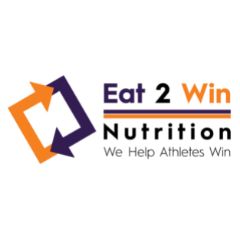Grocery Shopping List for Athletes
Next Level Podcast with Host Tavis Piattoly, MS, RD, LD
Kelli Kidd, MS, RD, LDN
Has been working extensively with athletes since 2001 when she became the dietitian for the United States Military Academy.
In this podcast you will learn all about tips and tricks for navigating the grocery store as an elite athlete. Most importantly, a sample athlete's grocery list is provided to get you started. Our guest, Kelli, has been working extensively with athletes since 2001 when she became the dietitian for the United States Military Academy. She served as the Corps of Cadets’ dietitian until 2010. Since then she has continued to work with athletes ranging in age from youth to Masters in a variety of sports ranging from soccer to cycling. Helping athletes achieve their best through optimizing nutritional practices remains her passion.
Her sports background includes running Cross-Country and Track and Field at the collegiate level at Pennsylvania State University from 1991-1995. She achieved All-American status twice in the 10,000M in 1993 and 1994. After completing a successful collegiate running career, Kelli transitioned to triathlons. Kelli has completed four Ironman triathlons, to include the Hawaii Ironman twice.
Her clinical background includes a B.S. from Pennsylvania State University in Nutritional Sciences with a minor in Exercise Science. She completed her internship from Emory University Hospital in Atlanta, GA and obtained her Masters of Science in Nutritional Sciences from the University of Washington. Kelli has been a Certified Specialist in Sports Dietetics since 2006.
In this episode you will learn:
1.Challenges athletes face when trying to make healthy choices at a grocery store.
2. Rules or tips Kelli recommends to athletes when going to the grocery.
3. What to do if you’re short on time for shopping and is there a method of starting in a particular place of the store to get out sooner.
4. How beneficial is it to go to the grocery with a list and does it save time and money.
5. Kelli’s recommendation for those who need to increase their F&V intake but have not been buying them because when they do, they often go bad.
6. Advice she gives to help athletes to make healthy choices when shopping.
7. How to read a nutrition label on specific products and tips on what to do when the product has multiple brands to choose from (i.e. yogurt, bread, etc).
8. Items that may be advertised as Healthy but are really not when you look at the food label.
9. Her new eBook titled Grocery Shopping List for Athletes: Using the Grocery Store to your Advantage.
Links and Resources
- Grocery Shopping List for Athletes
- Grocery Shopping on a Budget for Athletes
- Grocery Shopping on a Budget for Athletes
- Are You Using these 5 Grocery Shopping Tips to Save Money and Time?
- How to Grocery Shop like a BOSS and Save Money and Time?
- What are the Best Ways to Save Money when Grocery Shopping?
- What are the Top 10 Secrets Grocery Stores Do Not Want You to Know to Save Time and Money?
- What is a Great Grocery Shopping List for a Picnic?
- Where are the Best Sites for Grocery Store Coupons? I Need to Save Money!
- Optimal Performance Starts at the Grocery Store
Podcast Transcript
0:00 Tavis Piattoly Introduction
4:37 Challenges athletes face when trying to make healthy choices at a grocery store.
- Knowing how they’re set up and how the grocery store is set up to sell things – not necessarily to promote the healthy items
- Example: milk at the back of store
- They are enticing us to do impulse buys
- Displays at the end of the aisles are not there for a bargain; they are there to sell faster
- Expensive items that are most likely unhealthy are put at eye level because they are easiest to grab
- Another challenge is athletes not knowing what athlete diet should be composed of
5:53 Rules or tips Kelli recommends to athletes when going to the grocery.
- Don’t go to the grocery hungry
- If you do not you will be affected, try an experiment to compare your receipts when you go hungry versus when not.
- Take a list or quickly jot items down before walking inside grocery store
7:20 What to do if you’re short on time for shopping and is there a method of starting in a particular place of the store to get out sooner?
- Get to know 1-3 grocery stores to make grocery store shopping easier
- Put list in order of the grocery store
- Stores may purposely change store set up
- Grab items that you ruin out (Example: milk, bread, eggs) that are around the perimeter
9:26 How beneficial is it to go to the grocery with a list and does it save time and money.
- YES!
- Best way to put together a list is to take notes throughout the week.
- If pen and paper is not for you, you can download a grocery store list app.
11:20 Kelli’s recommendation for those who need to increase their F&V intake but have not been buying them because when they do, they often go bad.
- Purchase easy to eat fruits and veggies, such as the lettuce blends.
- Frozen vegetables and fruits
- Could add frozen fruit to smoothies
- Baby spinach. Can add into pasta dishes
13:55 Advice she gives to help athletes to make healthy choices when shopping.
- Have your grocery cart to match your athlete plate. She suggests having 3-4 natural colors on your plate and at least this many in your cart.
- If you run into your RD in the store, how would you feel about your cart
16:50 How to read a nutrition label on specific products and tips on what to do when the product has multiple brands to choose from (i.e. yogurt, bread, etc).
- Note: Nutrition facts label has now changed since this podcast was recorded.
- Yogurt:
- 20-25 gram carbohydrates for 8 ounces.
- 10-20 grams of protein
- Greek yogurt tends to have the most protein
- Less than 5 grams of fat
- Bread:
- Whole grain → the first ingredient on the list needs to be whole grain flour or it states 100% whole grain
- Should have at least 3 grams of fiber per slice
- Cereal:
- 3 grams or more of fiber
- Less than 5 grams of sugar
21:20 Items that may be advertised as Healthy but are really not when you look at the food label.
- Snap or cereal bars
- Fat-free items → could have add more sugars and salt
- Example: low-fat peanut butter
- Health messages could be skeptical. Double check the nutrition facts label
- Trifecta = fat, sugar, and salt
24:30 Her new eBook titled Grocery Shopping List for Athletes: Using the Grocery Store to your Advantage.
- Motivation to create it was a part of her goal to help young athletes. She wants to fill the knowledge gap.
- Topics discussed in the book: basics of a plan, food allergies, snacks, overlooked features in grocery stores



Facebook comments